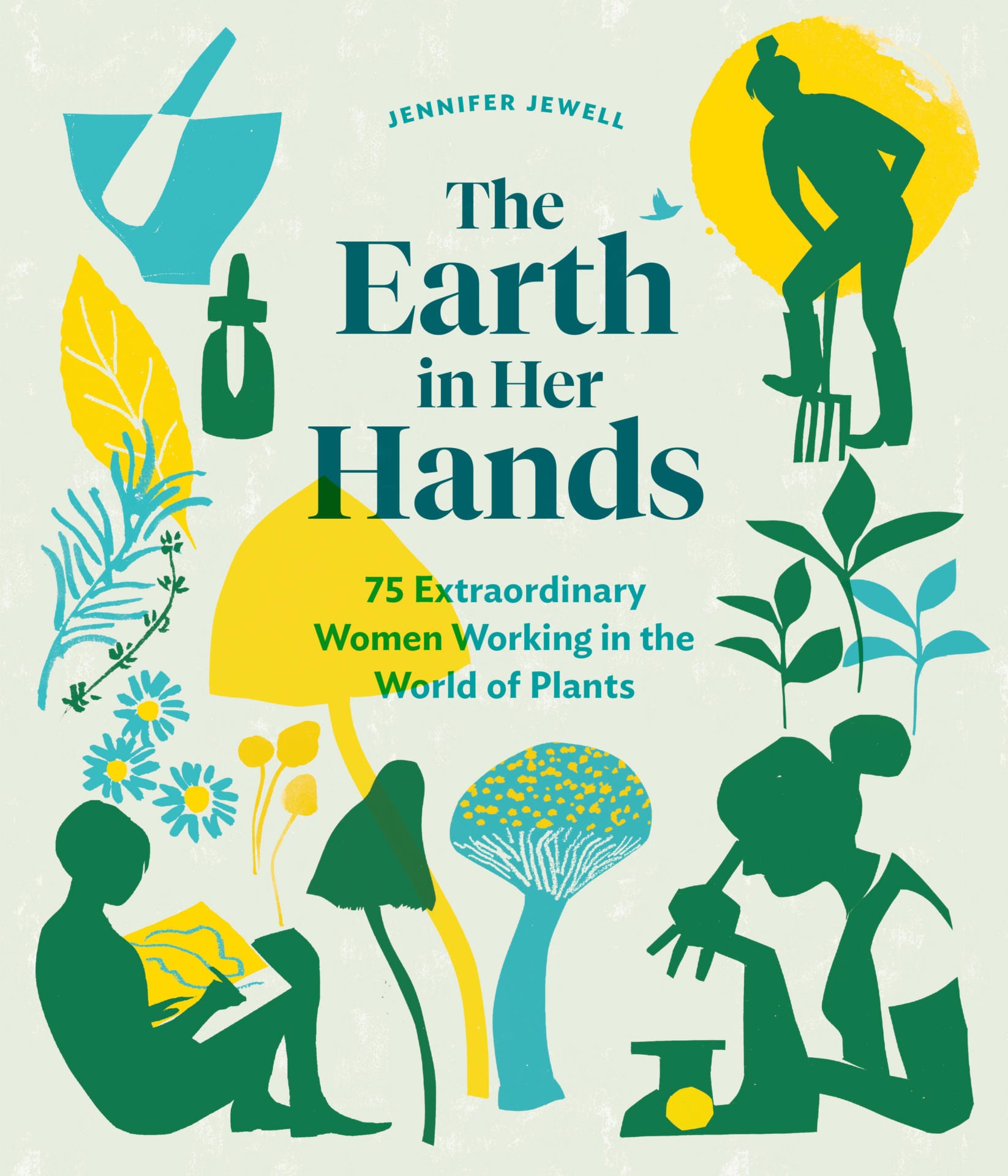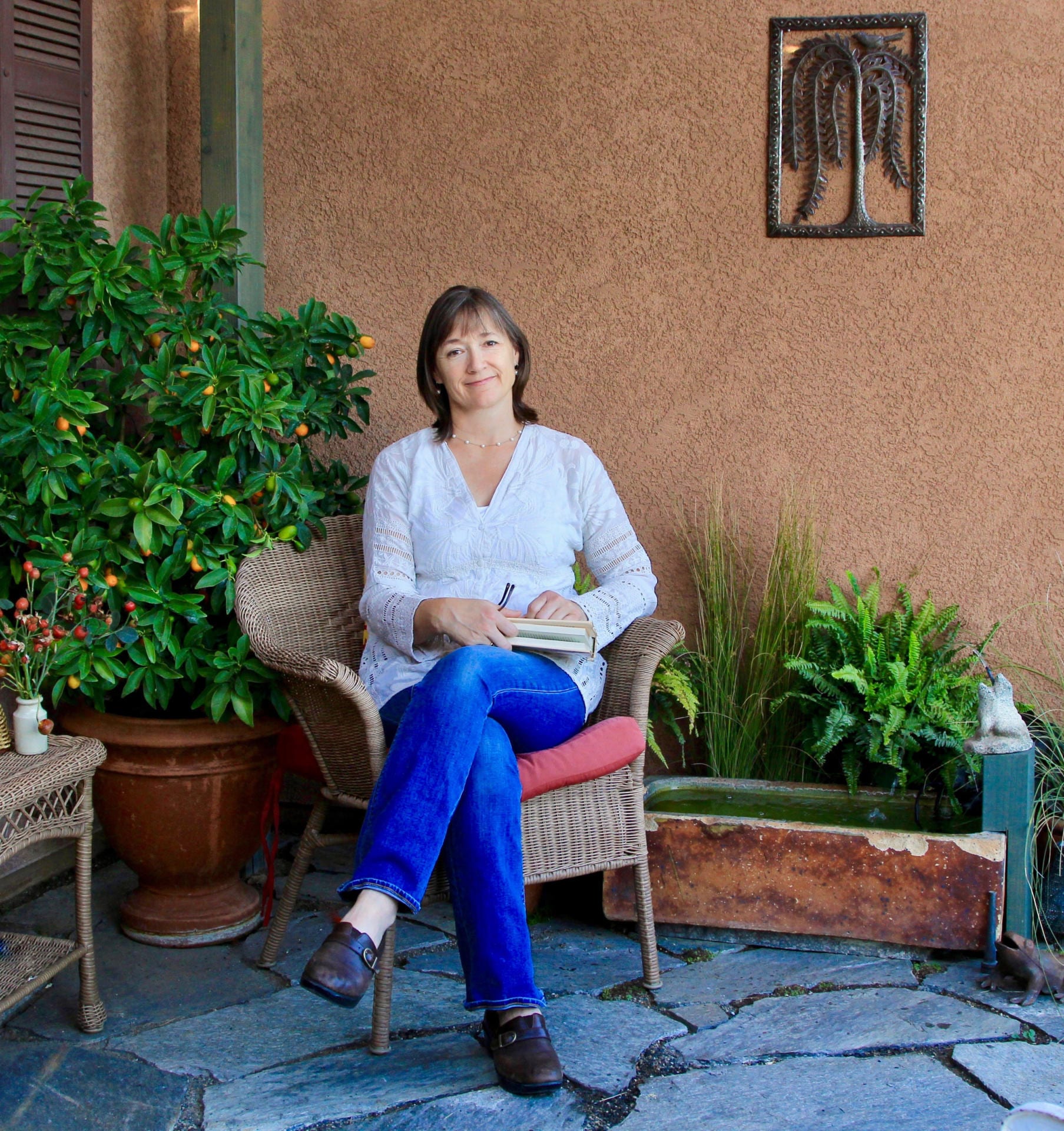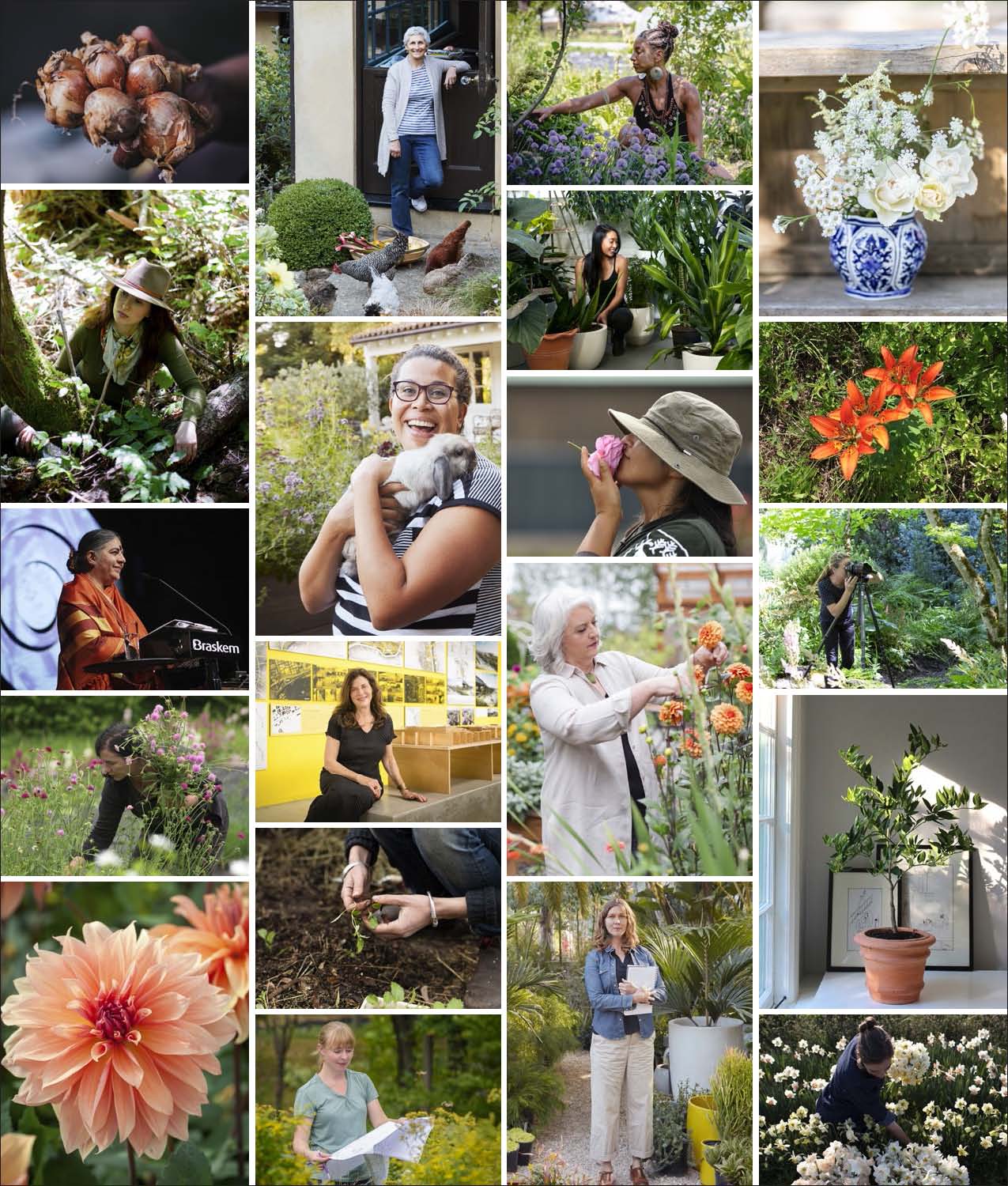by Jennifer Jewell
This excerpt from The Earth in Her Hands is reprinted with the permission of the author and Timber Press and has been edited slightly for context.
Women have been sowers of seeds and tenders of seedlings for a very, very long time. For much of that time these women didn’t have the time or the means to document their history. There is no telling the whole story of women making their lives with plants or women broadening the field of plant knowledge and practice. I can’t even superficially acknowledge all the women in plants who’ve cultivated this territory before us, except to say the compost-rich soil they left behind is what germinated the seeds that grew the vibrant women I’m writing about today.
 What does it even mean to be a woman in plants? For the purposes of my book, it’s not exactly being a plantswoman, though many of these women are that to be sure. Compiling a list of 75 extraordinary women has felt akin to mapping mycelia pathways between collaborating organisms in the soil of a forest. They are distinct individuals, and yet in connection and communication: learning from each other, riffing off each other, reacting and responding to one another. While writing, I was determined to focus on the diverse ways horticulture intersects with our everyday world and on women whose work has enriched and expanded these intersections in the last twenty-five years.
What does it even mean to be a woman in plants? For the purposes of my book, it’s not exactly being a plantswoman, though many of these women are that to be sure. Compiling a list of 75 extraordinary women has felt akin to mapping mycelia pathways between collaborating organisms in the soil of a forest. They are distinct individuals, and yet in connection and communication: learning from each other, riffing off each other, reacting and responding to one another. While writing, I was determined to focus on the diverse ways horticulture intersects with our everyday world and on women whose work has enriched and expanded these intersections in the last twenty-five years.
I’m interested in how the plant world is improved by not only greater representation of women generally but also by diversity among those women. I want to explore the ways this field is a more viable and creative career path for women than ever before and how the plant-work world is demonstrating greater social and environmental responsibility, in large part due to women’s contributions.
Our human engagement with plants connects us to the natural world, to our communities, and to ourselves on powerful intellectual, physical, and spiritual levels. My own fifty-three-plus years of digging in the dirt, tending plants, and finding life there has been complemented by a simultaneous observing, questioning, interviewing, and learning from other people on the same journey – resulting in a sort of meta- or quantum-gardening. These profiles of women doing current and innovative work in all fields I count as horticultural – botany, environmental science, landscape design/architecture, floriculture, agriculture, social justice, plant hunting and breeding, seed science, gardening, garden writing and garden photography, public garden administration, research, and public policy – often represent larger issues or shifts in our world. Their work illustrates how the many challenges of our world can be met through cultivating an interdependence with plants. It is a rebirth in many sectors. And like all birthings, this one is being sung, screamed, crooned, whispered, hummed, and rocked into existence by distinctly female voices.
In many cultures women are socialized to collaborate, nurture, and think holistically – we tend to employ systems thinking, which is related to a multi-tasking mentality. These seventy-five women are smart enough to be wary of the constraints of binary thinking and reverse bias. They hope that more women of all kinds, in all fields of study, will forge greater balance in how we approach life’s challenges as a community.
One of the most compelling, sometimes uncomfortable, and always energizing missions in my own work has been what I’ve come to refer to as “Decolonize Your Garden.” For centuries now the most visible representations of horticulture have been images of middle-aged and middle-class or affluent white people. But horticulture is a human impulse, in all cultures, in all times, practiced, codified, ritualized, and valued across any and all social boundaries. I find it eye- opening to interrogate myself about my own biases, while striving to never inappropriately use or appropriate others’ cultural ways of being and knowing. These are tricky, winding pathways, but important to navigate with humility, openness, respect, and acknowledgment.
A note on other biases: I am a white, middle-class, middle- aged, cisgendered woman who loves this planet, her plants, landscapes, gardens, and all her people, but especially her plant-loving people. While I’ve chosen for the sake of simplicity to use the standard pronouns she/he/they, I embrace and applaud a wide, inclusive view of gender and sentient life. Our physiological ranks include all beautiful manner of non-binary beings, and I aim to advance and celebrate a feminine principle while encouraging ever-greater balance and broader diversity in all fields.
The hardest part of writing a book profiling a particular number of women was choosing the women to include. For every woman here, there are many more who could be. But constraints are both necessary and useful. I limited the geographic scope to the world I know best, with representatives from the United States, England, Ireland, Wales, Canada, Australia, India, and Japan. They range beautifully across race, ethnicity, socioeconomic and religious backgrounds, sexual orientation, and age. Of each, I asked them to note either women who preceded and inspired them or women coming up in the field whom they thought the world should know about. You’ll find these names listed at the end of each profile—they create a beautiful, often overlapping web of women in the plant world. Sometimes they’re very personal choices—mothers, aunts, grandmothers—sometimes they’re simply identified by name and occupation, and sometimes the profiled woman has written a bit about how and why they’re important. I hope you’re intrigued and follow these connections, helping make the network of women in plants more visible.
The Earth in Her Hands is an extension of my ten years in public radio and podcasting with my program Cultivating Place. Through interviews with plant people and organizations from around the world, Cultivating Place explores the relationships between our plants and gardens, the natural history of the places in our lives, and their importance to our cultural and environmental literacy, our broader communities, and our individual well-being. I’ve gardened my entire life, lived in many places around the world while doing so, and have been a professional garden communicator for the past twenty years. I believe gardens and gardeners are powerful, intersectional spaces and agents of betterment in our world. I see hope and value in a self-sustaining cycle of living with plants, loving plants, learning plants, growing plants, knowing plants, interpreting plants, and educating and engaging upcoming plantspeople and the public through communication and interpretation.
My hope is that my collection of profiles is informative and inspiring for all readers. There are so many ways we engage in and grow from the cultivation of our plant places. Enjoy the cultivation of your places while you enjoy the beautiful stories of how seventy-five extraordinary women cultivate theirs—one handful of plant-rich earth at a time.
About the Author
 Jennifer Jewell is the creator and host of Cultivating Place, an award-winning public audio program and podcast on natural history and the human impulse to garden. The program is a voice for, with, and about gardeners and nature lovers of all manner from around the world, exploring how and why we garden and what we mean when we garden. Through thoughtful conversations with growers, gardeners, naturalists, scientists, artists, and thinkers, Cultivating Place illustrates the many ways in which gardens and gardening are integral to our natural and cultural literacy. Ms. Jewell has been writing about gardens and horticulture since 1998, and her work has appeared in Gardens Illustrated, House & Garden, Pacific Horticulture, and other magazines. The Earth in Her Hands is her first book and will be available March 2020.
Jennifer Jewell is the creator and host of Cultivating Place, an award-winning public audio program and podcast on natural history and the human impulse to garden. The program is a voice for, with, and about gardeners and nature lovers of all manner from around the world, exploring how and why we garden and what we mean when we garden. Through thoughtful conversations with growers, gardeners, naturalists, scientists, artists, and thinkers, Cultivating Place illustrates the many ways in which gardens and gardening are integral to our natural and cultural literacy. Ms. Jewell has been writing about gardens and horticulture since 1998, and her work has appeared in Gardens Illustrated, House & Garden, Pacific Horticulture, and other magazines. The Earth in Her Hands is her first book and will be available March 2020.


